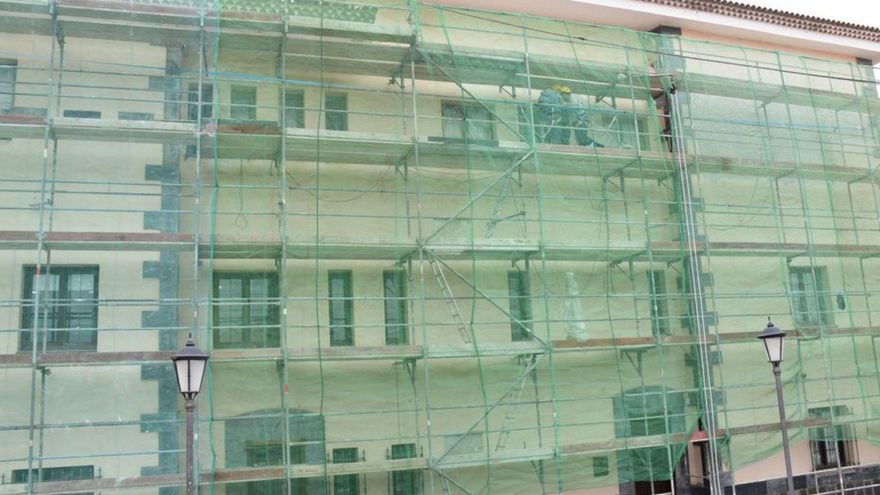
The El Rosario Town Hall building, in La Esperanza, is immersed in the process of reforming and rehabilitating its facilities to make them sustainable. This is the execution of the energy works of the envelope of the town hall. It is a project of 237,326 euros of investment, which benefits from a subsidy of 85% granted by the Institute for the Diversification and Saving of Energy (IDAE).
This action, together with the installation of the photovoltaic panels, will make the Town Hall headquarters the first municipal facility with zero emissions, generating its own electricity in a clean way and achieving a high level of energy efficiency.
The rehabilitation of the thermal envelope of the building will allow the insulation of all the interior habitable spaces and their separation from the outside environment, reducing the need for temperature regulation devices. Until now, none of the building’s enclosures had thermal insulation, because the building regulations of the time in which it was built did not require compliance with the building envelope coefficient, the local institution detailed in a note.
The Councilor for Ecological Transition, Fidel Vázquez, explains that “With this work alone we will reduce the energy we consume by almost 55%, just over 25,000 kilowatt hours, which, according to current electricity prices, is equivalent to about 8,700 euros per year. To this amount must be added the production of the photovoltaic installation, pending installation when the work is finished, and which would produce approximately 45,000 kilowatt hours per year, thus leaving a building with a carbon footprint close to zero. In addition, they will stop emitting 77.11 tons of dioxide into the atmosphere annually. Fidel Vázquez maintains that “between the energy savings of the work of the envelope and the improvement of energy efficiency and the installation of photovoltaic self-consumption, the main municipal building is going to become a “zero emissions” building. He highlights the mayor that “there are not many examples in the Canary Islands.”















